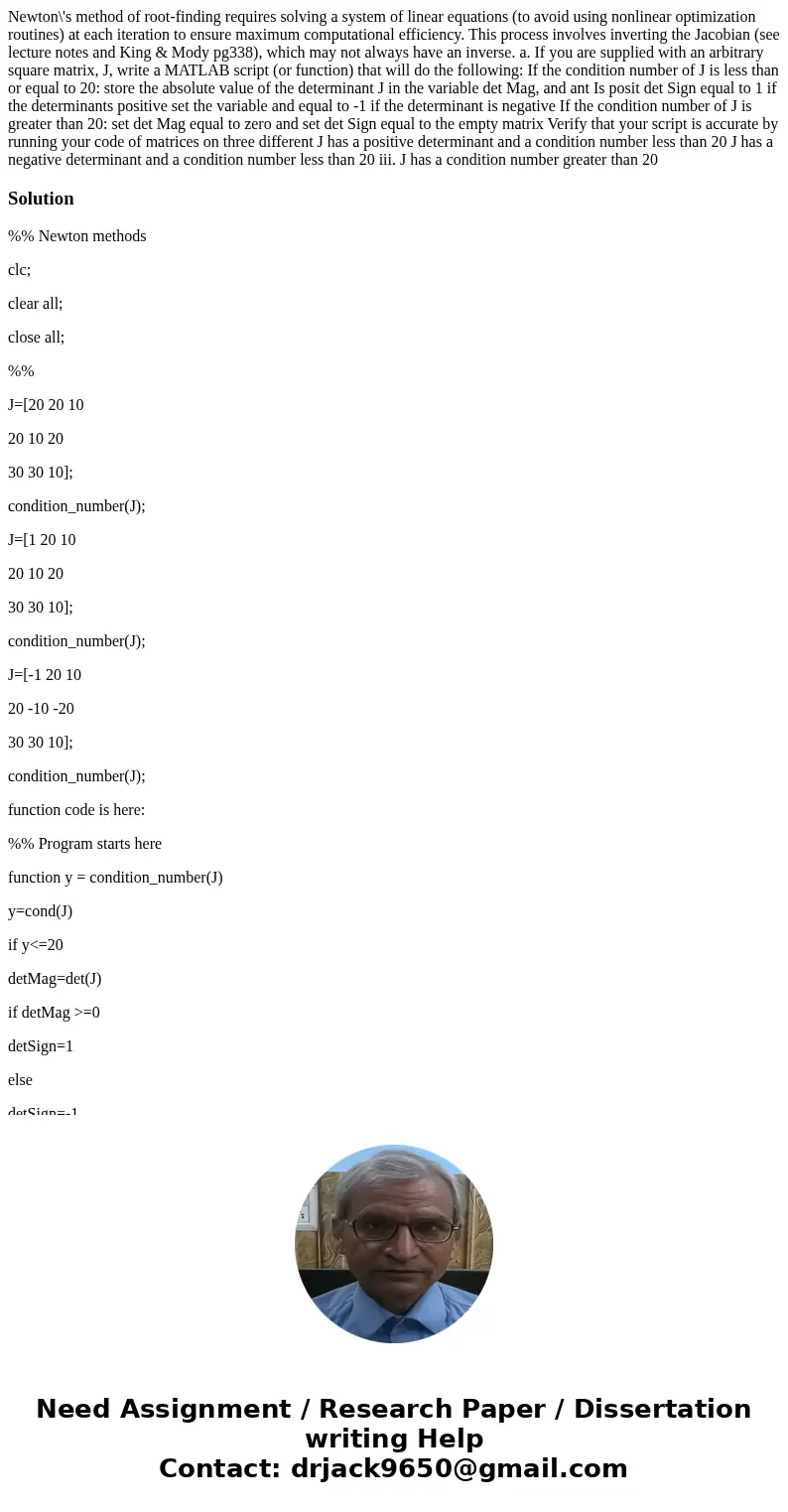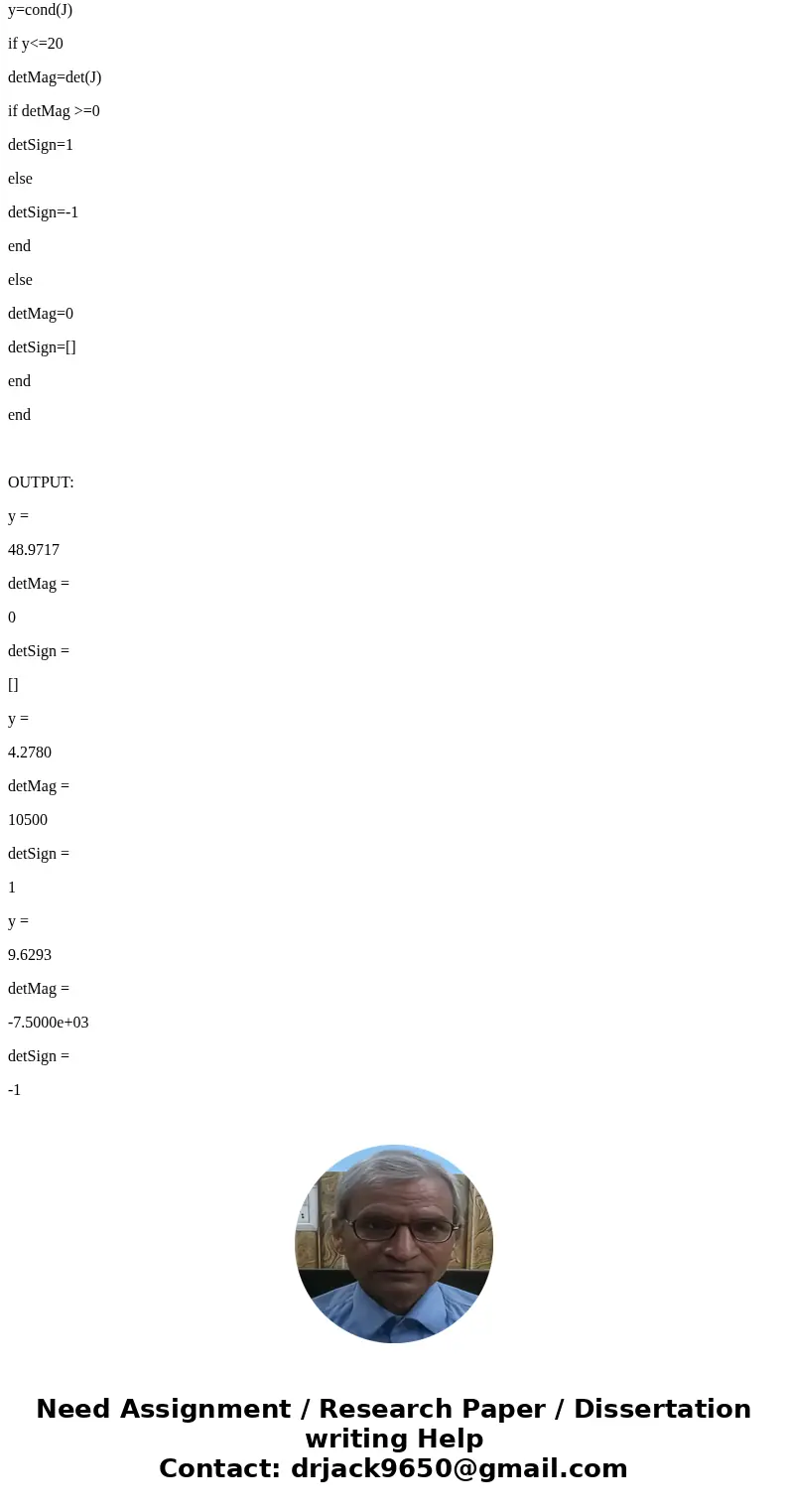Newtons method of rootfinding requires solving a system of l
Newton\'s method of root-finding requires solving a system of linear equations (to avoid using nonlinear optimization routines) at each iteration to ensure maximum computational efficiency. This process involves inverting the Jacobian (see lecture notes and King & Mody pg338), which may not always have an inverse. a. If you are supplied with an arbitrary square matrix, J, write a MATLAB script (or function) that will do the following: If the condition number of J is less than or equal to 20: store the absolute value of the determinant J in the variable det Mag, and ant Is posit det Sign equal to 1 if the determinants positive set the variable and equal to -1 if the determinant is negative If the condition number of J is greater than 20: set det Mag equal to zero and set det Sign equal to the empty matrix Verify that your script is accurate by running your code of matrices on three different J has a positive determinant and a condition number less than 20 J has a negative determinant and a condition number less than 20 iii. J has a condition number greater than 20

Solution
%% Newton methods
clc;
clear all;
close all;
%%
J=[20 20 10
20 10 20
30 30 10];
condition_number(J);
J=[1 20 10
20 10 20
30 30 10];
condition_number(J);
J=[-1 20 10
20 -10 -20
30 30 10];
condition_number(J);
function code is here:
%% Program starts here
function y = condition_number(J)
y=cond(J)
if y<=20
detMag=det(J)
if detMag >=0
detSign=1
else
detSign=-1
end
else
detMag=0
detSign=[]
end
end
OUTPUT:
y =
48.9717
detMag =
0
detSign =
[]
y =
4.2780
detMag =
10500
detSign =
1
y =
9.6293
detMag =
-7.5000e+03
detSign =
-1


 Homework Sourse
Homework Sourse